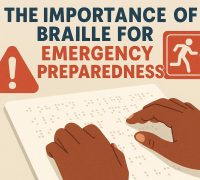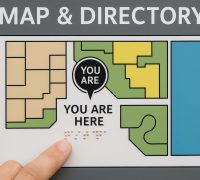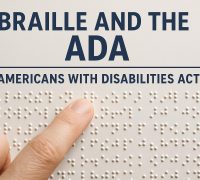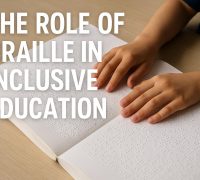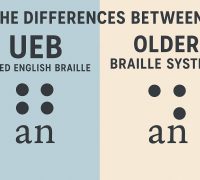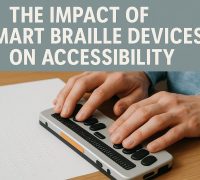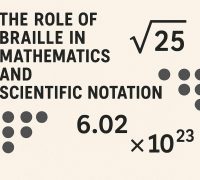The Essential Role of Braille in Emergency Preparedness
Emergency preparedness is crucial for ensuring the safety and well-being of individuals and communities during unexpected crises. For individuals who are visually impaired, the use of Braille in emergency preparedness can be a vital tool for survival and effective communication during such situations. This document will explore the many facets of how Braille serves this critical function in emergency scenarios.
Understanding Braille
Braille is a tactile writing system that empowers visually impaired individuals to read and write through touch. This system uses arrangements of raised dots arranged in cells, each cell accommodating up to six dots. The configuration of these dots represents different letters, numbers, and even entire words or phrases. As a communication medium, Braille allows those with limited or absent vision to access textual information in a manner that they can engage with independently and effectively.
Practical Applications in Emergency Situations
During emergencies, clear and accessible information is indispensable for ensuring safety. While emergencies create high-pressure scenarios that demand quick, decisive actions, individuals who are visually impaired might experience unique challenges in accessibility and communication. The integration of Braille into emergency preparedness strategies is thus essential. Braille can be utilized to relay essential instructions and updates specific to the situation at hand, such as evacuation routes, emergency contact numbers, or even first aid procedures. For example, an emergency kit could incorporate Braille-encoded lists of contents alongside instructions for usage, enabling visually impaired individuals to quickly identify and utilize the resources necessary for survival and safety.
Enhancing Communication
The ability to communicate effectively can mean the difference between life and death during emergencies. By incorporating Braille into emergency preparedness protocols, individuals who utilize Braille can achieve a level of independence that facilitates urgent understanding and adherence to critical directives without reliance on others. This capability endorses both empowerment and autonomy, resulting in potentially reduced response times during an emergency and enhancing the overall efficacy of emergency measures.
Implementing Braille in communication means labeling emergency exits, creating tactile guides for navigation, and ensuring that instructional manuals and brochures are produced in Braille, among other strategies. The goal is for visually impaired individuals to possess and access the same level of information as everyone else, able to respond swiftly and intelligently to emergency demands.
Challenges and Solutions
The introduction of Braille into emergency preparedness plans is not without its challenges, though many of these are not insurmountable. A significant hurdle is the limited availability of Braille materials. Producing Braille can entail both time and financial costs—elements that may limit widespread distribution. However, partnerships with organizations dedicated to accessibility can significantly alleviate these barriers. These organizations often play a crucial role in facilitating the distribution of materials by either lowering production costs or providing complementary resources.
Efforts are being made worldwide to address these challenges and improve availability. Many organizations, including non-profits and governmental bodies, actively work to increase accessibility to Braille resources. They aim to distribute these resources broadly to ensure that all individuals requiring them have ready access.
One promising development in this area is the growing interest in digital technology to produce Braille at a reduced cost. Digital Braille displays, for instance, offer a means of accessing dynamic and updated information that can be essential in real-time emergency scenarios. These developments, combined with support from networks like the Braille Network Organizations, continue to enhance the level of preparedness and accessibility for visually impaired individuals worldwide.
Broader Implications
The integration of Braille into emergency preparedness strategies bears implications that extend beyond mere practical necessity—it represents a commitment to inclusivity and equity. By ensuring that critical information is disseminated in a manner accessible to everyone, emergency planners can promote a sense of security and autonomy for individuals who might otherwise be marginalized or underserved.
Moreover, awareness of and adherence to inclusive practices like these can foster broader societal acceptance and support for the visually impaired community. Such measures contribute to dismantling barriers in other areas, paving the way for full participation in economic, social, and cultural life.
Conclusion
In conclusion, the integration of Braille into emergency preparedness plans is an essential step toward both inclusivity and safety for the visually impaired community. The ability to access critical information autonomously allows individuals to act decisively and independently in emergency scenarios, thus enhancing their personal security and the effectiveness of emergency responses overall. As we progress in our technological capabilities and societal awareness, fostering the integration of Braille into emergency plans reflects both a commitment to safety and a deeper understanding of accessibility. As more organizations and individuals acknowledge the vital role that Braille plays in preparedness, society moves towards a future where no one is excluded from essential safety information.
